Didn’t Discover!!
What You're Looking For?
Didn’t Discover!!
What You're Looking For?
Home Inbound Marketing HubSpot Loop Marketing Playbook Explained! Key Insights from INBOUND 25

 By
Aman Bhati
By
Aman Bhati
The INBOUND 25 event that we were all waiting for started yesterday. And its first session, HubSpot Spotlight, was delivered by Yamini Rangan, CEO of HubSpot & Karen Ng, EVP of Product, HubSpot.
The primary focus of this session was HubSpot’s new AI-powered growth marketing playbook – “The Loop Marketing” and new AI additions in HubSpot that will help you leverage this playbook to its full potential.
In the following sections, we’ll break down these major announcements into an easy-to-understand format and explain why this session matters for marketers, sales teams, and business leaders looking to stay ahead & ready for the upcoming massive AI transformation.
As Yamini began her talk, she warmly welcomed everyone to INBOUND 25 in San Francisco. And on an appreciating note, she said SF is the perfect place for this event because “innovation is just a way of life here”
Then she shares that two weeks ago her son got enrolled at a college, and from his list of curious questions, like ‘Will I make new friends,’ ‘How often should I call home,’ etc., the question that made her pause was:
“What should I learn if I want a great future?”
This question was not about college alone; it was about how we all stay relevant and fit in to the world of AI when we don’t even know what’s going to happen in the next four months.
New technologies kept making their way to the market, but they never raised questions about humans’ productivity or identity; AI did it. Plus, it’s also challenging us to evolve quickly with AI, or we’ll have minimal chances of visibility in the market.
Just like we all are grappling with this situation, customers are also facing the same. They are trying to grow, but simultaneously fighting noise, chaos, and pressure.
The leading cause of this problem is:
The traditional funnel was simple: Awareness (TOFU), Consideration (MOFU), and Conversion (BOFU). But today, the funnel is dispersed and shrinking.
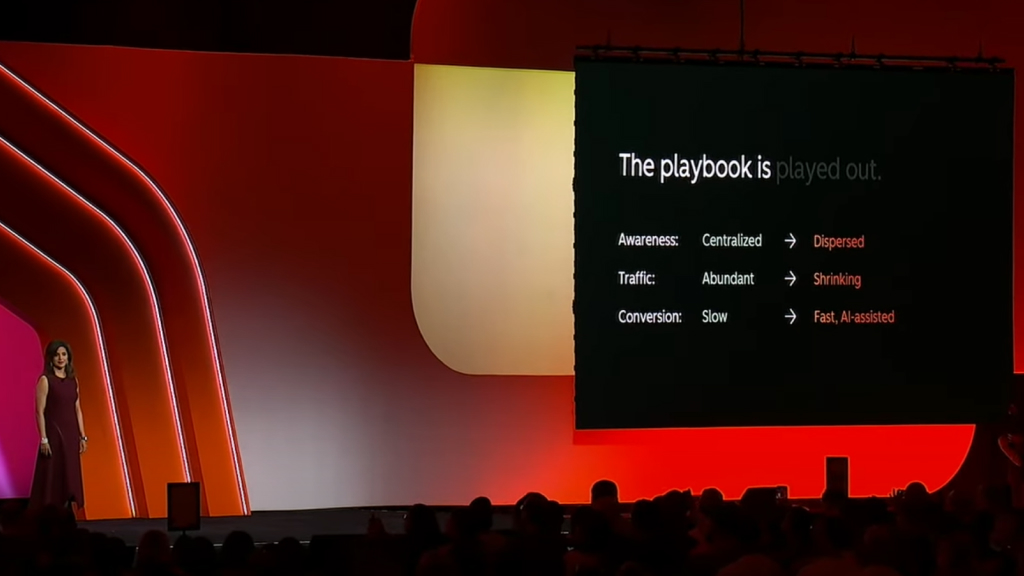
First awareness was made through blogs or website content, but today, people hardly click on the blue link to open a site and search for the information they want. Instead, they want short and direct answers like the ones provided by AI tools and overviews.
Not only that, but the audience used to search only through search engines, but now they are present everywhere, through Newsletters, Instagram, LinkedIn, TikTok, podcasts, and some even read blogs. And managing all these, and that too fast, is overwhelming the customer.

To overcome the problem of funnels not funnelling and the playbook being played out, Yamini introduced THE LOOP — a growth playbook built for the AI era.
The playbook mainly has four steps, and at its centre is the new kind of partnership between humans and AI agents.
A brief understanding of all four steps of the loop is:
Now, let’s learn all four steps in detail
This playbook is named and designed as a loop because it depicts a never-ending and constantly evolving process that AI-age marketers need to follow to cope with current growth scenarios. Let’s understand how to work with this playbook:
“It makes AI work for you, not the other way around”
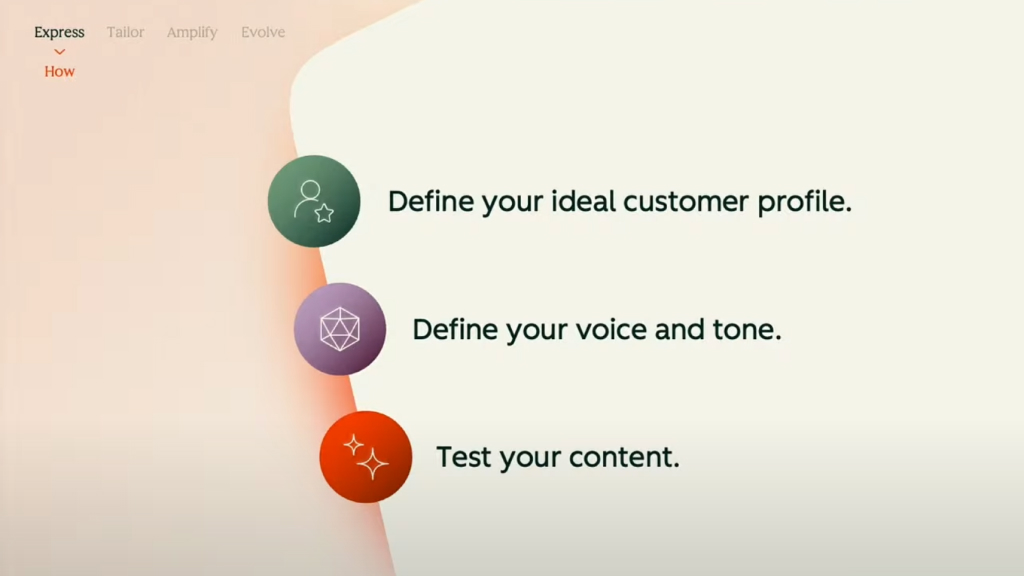
AI can generate content in seconds, but if it does not have a clear point of view, that content will be off base and sound like spam. This is why expressing yourself to the AI tools you use is essential.
Pro tip: Always start by writing a content piece independently and then ask AI to revise it wherever necessary. This will help the tool understand the exact tone and voice you use to communicate with your customers.
Yamini adds that defining your voice for the AI tool will increase the speed of content creation and decrease the cost.
“Make your content personal and not just personalized”
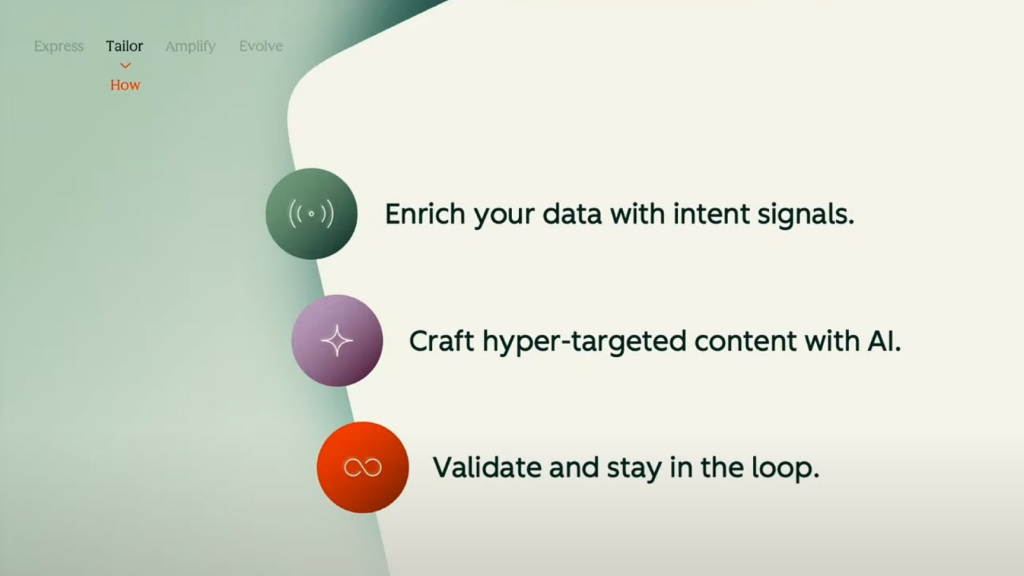
Yamini recalls that in the 90s, just adding “Dear Yamini” at the beginning of an email was enough. But today, adding the first name isn’t personalization; it is noise.
But AI changes that game. It lets you treat every customer like a segment of one, and maps their intent to know what type of information they want to see. So, from here, AI accompanies you in your growth.
She adds that if you do all this well and accurately, you will get higher engagement, and HubSpot has already turned pro at it. But everything is meaningless until your content reaches the right audience on the right platform.
“Diversify Channels To Engage With Customers Where They Are”
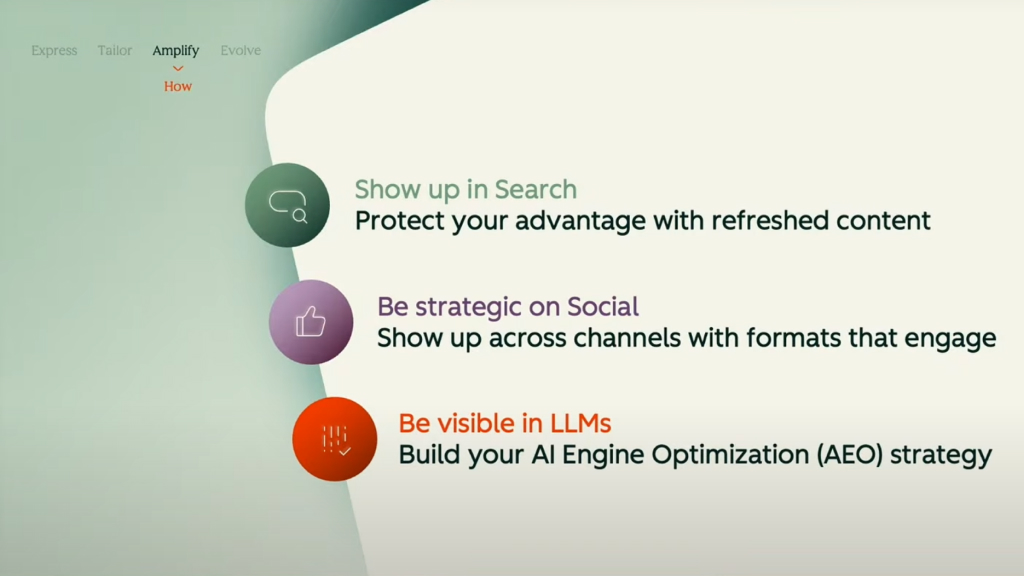
In her INBOUND 25 speech, Yamini Rangan mentions, “If you take just one thing from this entire keynote, it should be this part of the Loop, because this is how you drive growth in the AI era.”
Amplification is the heart of the Loop marketing playbook because your customers are everywhere across multiple channels, and unless you amplify your content reach, your brand’s visibility remains stagnant.
AEO means AI Engine Optimization or Answer Engine Optimization. It’s a group of tactics you follow to increase your company’s visibility in the answers AI delivers.
In 2022, HubSpot’s team noticed that customers were spending less time on blogs and more time engaging with content on social media, newsletters, and podcasts.
To adapt, we made bold moves, investing in a podcast network, expanding newsletters, launching ten YouTube channels, and growing our presence on Instagram and LinkedIn. The results were clear: leads from YouTube increased 100% year over year, while newsletter leads grew 90%.
The common thread across these new channels was that they were all people-driven, built on personality, connection, and credibility; the keys to engaging customers today.
So, along with amplifying your content, building a personalized AEO strategy is also necessary.
“Iterate, learn fast, and act faster”
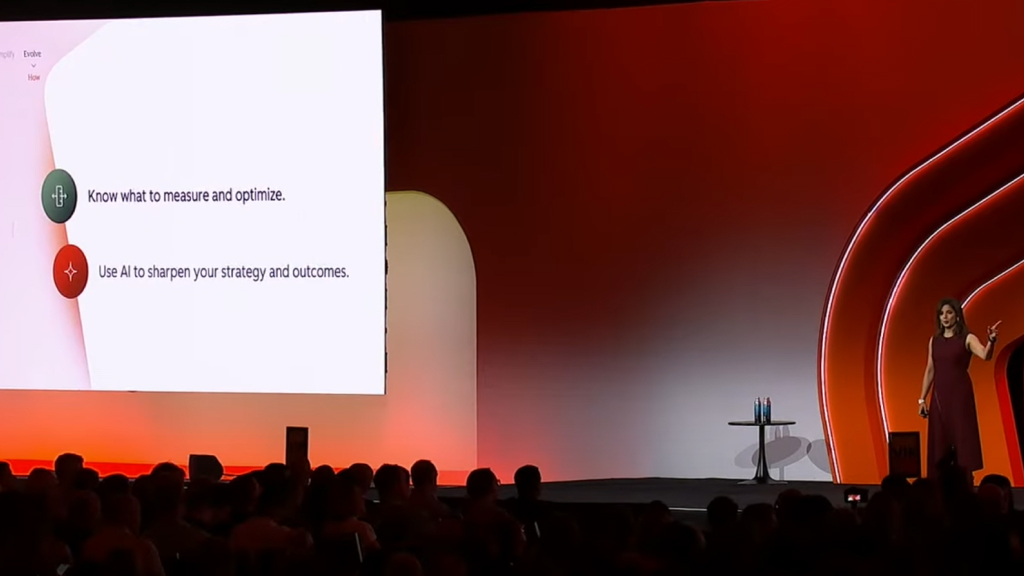
Yamini mentions that before AI, marketing campaigns used to look like big cruise ships, slow, inflexible, hard to steer. But with AI they’re like jet skis, and that’s all you need to do in this step.
For that, Yamini brings in a visual of the Loop Scorecard on the huge screen behind her on the Main stage of HubSpot INBOUND 25. If your measured metrics look like the ones mentioned here, then you are doing this loop well. Or else, you still need to evolve:
While ending her session, Yamini especially appreciated HubSpot’s marketing team for creating this amazing playbook. Plus, they also put together this all-in-one slide that helps you understand and implement each step of the loop with accuracy:
After this, Yamini Rangan thanked everyone and handed over the stage to Karen.
Continue reading the Part 2 of this blog, where we will explore Karen Ng’s session on HubSpot’s newest product innovations, including Smart CRM and Breeze Agents.

Dive into other interesting, well-researched, and nicely structured blog posts
 a CTA
a CTAWe will strategize our execution based on your requirement
Stay up to date by subscribing to our newsletter.
5900 Balcones Drive STE 100, Austin, TX 78731
Velocity 904-910, L.P. Savani Road, Nr. Madhuvan Circle, Surat, Gujarat 395009
5900 Balcones Drive STE 100, Austin, TX 78731

Call
+91 27174 54342

Email Address
hello@trooinbound.com

Skype Id
nikhil.jani

Schedule A Meeting
meeting/nikhil-jani
Copyright © 2025, TRooInbound. All Rights Reserved.